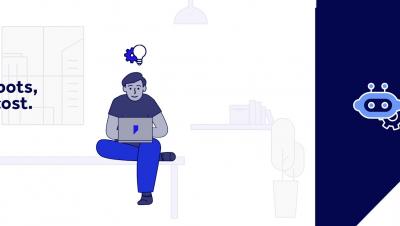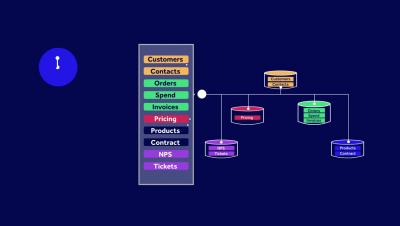Systems | Development | Analytics | API | Testing
November 2021
Automate even faster with the Appian RPA Recorder
Inside the Automation Maturity Index Results
Appian 21.4: Further Extend the Reach and Impact of Your Organization
As digital transformation continues full steam ahead across all industries, organizations are challenged by limited resources in a setting where speed to market is essential. We’re excited to announce Appian 21.4, which has new capabilities that extend the reach of your organization, delivering powerful mobile, AI, and data capabilities that let you connect with your customers anywhere. Only have a few minutes?
What's New in Appian 21.4 Low-code Platform
2021 Appian Public Sector Solutions Cup
3 Tips to Streamline Claims Operations for a Connected Insurance Experience
Insurtech funding hit a record high of $7.4 billion in the first half of 2021—already surpassing funding in 2020. With more and more emerging players entering the field, consumer demands for a more digital, connected insurance experience have grown to new heights. For many insurance customers, the claims process is a critical moment of truth, making it essential that insurers deliver a hassle-free, seamless experience.
Using Low-Code to Solve the 3 Biggest Challenges of State and Local Government
State and local government agencies in the US are facing heightened demand to address a long-avoided issue: outdated technology. The existing solutions these government organizations rely on are not user friendly, limit collaboration by siloing essential data, and make processes longer and more cumbersome than they need to be. Yet, despite the limitations that result from outdated solutions, it should come as no surprise that only 60% of states have a digital strategy.
Antalis Go Live with Appian
Accelerating New COP26 Initiatives with Low-Code
Many key initiatives were announced at last week’s 26th UN Climate Change Conference of the Parties (COP26) in Glasgow to encourage phasing out coal for electricity generation.
How To Fight Document Overload with Low-Code and IDP
In a Harvard Business Review article, Thomas C. Redman references a project by AT&T, the world’s largest telecommunications company, where the simple task of reducing invoicing errors uncovered something shocking: over 40% of invoicing data contained errors that cost the company tens of millions of dollars. Even in 2021—the age of digitalization—poor quality data is wreaking havoc in businesses, costing the United States a staggering $3 trillion per year.
Now is the Time to Enter the Low-Code Economy
Low-Code. This is a new term for many, and it raises questions. The first is “What is it?” Suffice to say, low-code is a new way to build software applications that is faster and better than traditional coding. A more urgent question is “why do we need it?” What kinds of shifts has the world seen that have caused something like low-code to gain prominence? We need to take a few steps back to understand how business and the tech industry have evolved.
Build Unlimited Bots, Fast
Public Interest Technology: Closing the Digital Trust Gap
The benefits of digital transformation are potentially limitless, with nearly endless ways to keep us connected with technology that optimizes efficiency, cost savings and competitive advantage. But here’s the thing.
5 Features that Save Developers Time in the Appian 21.4 Release
Did you know it takes an average of six months to build and deploy a basic enterprise app? It’s time to get our hours back. Low-code platforms like Appian cut that dev time in half or more. Design your apps securely and quickly using visual workflows so you can spend your time coding creative custom features instead of working on non-value adding, monotonous development tasks.
Low-Code Data, Explained
Insight from Mobile World Congress: 5G Is Propelling Industry 4.0 Innovation
At the recent Mobile World Congress in Los Angeles, it was clear that 5G tops the innovation agenda in the telecom sector. In fact, 5G will account for two-thirds of total mobile connections in North America by 2025. This goes far beyond the telecom industry though, enabling significant potential for enterprise digitization.
Low-Code vs. No-Code: What it Means for Insurance
As insurtechs and tech giants continue to disrupt the market, traditional insurers are under increasing pressure to modernize and keep pace with customers’ digital expectations. This trend shows no signs of slowing down. In fact, global insurtech investment reached a record $7.1 billion in 2020, with overall funding up 12% from 2019, according to Willis Towers Watson. It seems like everywhere you look there’s new technology promising to solve business challenges or inefficiencies.
21.4 Product Announcement Webinar
How Low-Code Platforms Are Democratizing Financial Services Automation
Financial services industry leaders overwhelmingly choose low-code platforms to manage their automation—81% of industry-leading companies say they are ahead or far ahead of competitors in adopting low-code platforms. What makes platforms so appealing to these companies? Well, many things, but not least the way they enable non-technical employees to design and manage applications and automation workflows with little to no developer support. In other words, their ability to democratize automation.
Introducing Appian Mobile Complete Offline Capabilities | Appian
We all know how frustrating it can be to lose a network connection, especially while we’re working. That’s why Appian is excited to introduce complete offline mobile capabilities to Appian Mobile as part of the 21.4 release. Mobile offline capabilities allow employees to use their mobile business apps with or without a network connection.
Why Insurance Organizations Choose Appian
Optimize These 5 Functions to Deliver a Connected Insurance Experience
Consumer demand for a digital, connected insurance experience is on the rise. But with disparate legacy systems in place that make it difficult to share data and make informed, real-time decisions, insurance companies are finding themselves in need of new technology to streamline their customer journey.
Low-Code DevOps - How Low-Code Transforms Collaborative Development in DevOps
At its most basic level, DevOps—a combination of development and operations—refers to a set of practices that streamline application development at every stage, from building and testing to deploying and monitoring. DevOps largely aims to break down silos and improve collaboration for teams looking to increase agility without compromising on software quality. Unfortunately, traditional high-code methods of development present a few challenges to successful DevOps transformations.












